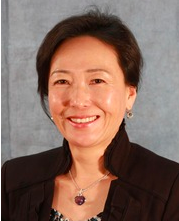CIRCL perspectives offer a window into the different worlds of various stakeholders in the cyberlearning community — what drives their work, what they need to be successful, and what they think the community should be doing. Share your perspective.
Yanghee Kim is an Professor in College of Education at Northern Illinois University, where she runs the CREATE Center.
How did you get started in cyberlearning?
Before my current academic position, I was a public school teacher and administrator. Working as a teacher, I was an action researcher designing applications to assist my students with learning the topic. I learned that carefully designed technology could help many students who are in great need in conventional classrooms by providing individualized learning experiences. I became an educational technology enthusiast convinced about the affordances provided by technological tools. To instantiate efficacious programs, design researchers should give careful thought to our designs, and our thoughtful design should be refined through repeated tests with learners in situ. During my graduate work, I found that I wholeheartedly agreed with A.L. Brown’s ideas on design experiments published in 1992. I believed what the cyberlearning community sought to accomplish was right, attempting to transform learning experiences through theory-guided design of tools in an iterative process and generating new understanding of learning and design that will guide future design.
What would you like people to know about you?
Being a hard-core educator, I believe that the primary goal of education is building human capital, which is achieved through supporting learners’ emotional, social, intellectual development in a desired direction. Importantly, educational endeavors involve caring and compassion for learners as well as intellectual stimulation. I like to support the students who lack resources and opportunities due to various social and cultural conditions, which limits them in achieving their full potential.
In my first career working as a teacher and administrator in South Korea, my interest was in developing programs to help struggling students who were largely from low SES families. I started using technology as a supplemental tool to provide individualized learning and also overcome my limited capacity in working with big class on a daily basis. I became an action researcher in designing and implementing technologies in classrooms that naturally involved incremental refinement of my designs through close observation of the students’ interactions with the designed tool. Through this experience, I became convinced about the affordances that advanced technologies could offer to improve learning and teaching. As an administrator, I shared my work and beliefs with fellow teachers and administrators.
Since I started my academic career in the U.S., my work consistently has been about designing technologies in such a way as to support young learners who are marginalized due to their social and cultural conditions, such as social stereotypes, stigmas, or identity threats. My target student groups are gender/ethnic minorities, from low SES backgrounds. This work is fundamentally about increasing our understanding of how to help develop all children in an equitable way. This will help increase their psychological health and happiness now and later in their lives and also can contribute to building the nation’s human capital in a long term. Giving every chance and tool to a new generation of lifelong learners excites and motivates me.
What is your most recent insight from your work?
Originally I was thinking of designing interactive activities for a triad including a robot, a native English-speaking child, and a non-native English-speaking child. But I have recently observed great individual differences in children’s developing capabilities and their verbal expressiveness. Children typically start speaking out through mimicking more expressive peers, also agreeing or disagreeing to the peers. To be natural, the robot interaction group should be bigger than one child from each language group, probably two or three children, so the children can help and get help from the same-language speaking peer(s).
You participated in CIRCL’s proposal-writing workshop series. How did working with a mentor help your proposal writing process?
Through questions and constructive comments, my mentor, Janet Kolodner, helped me with developing a specific and focused line of thinking. She asked the right questions that helped me to realize some missing components to be further developed and specified. I needed help with sifting through and streamlining my ideas and tightening the proposal sections, narrowing down the scope of literature that is essential to the key ideas, and generating a coherent and compelling story top to bottom. My mentor was the right person for that job. Sometimes I felt she knew more than I did about the project problem. Through her questions, I was able to learn what was important in each section of the proposal. She is clear and straightforward, and easy to understand. Her affection for developing researchers is pleasantly surprising, and she is a strong role model.
If your work succeeds, how could learning be transformed?
My professional experiences as well as the literature on equity in STEM education have led me to believe that many marginalized students’ weak performance in STEM are attributable to both unfavorable social contexts and lacking instructional support that stimulates the students’ inspiration and performance. The intent of my work is to understand how to offer welcoming and caring learning contexts, where young children from diverse linguistic and cultural backgrounds feel included and build their identity as a contributing member in the classroom community. I believe that their positive experiences could serve as an impetus for their willingness to try and sustain learning of even challenging topics, eventually increasing their learning of the topics.
Additionally, if successful, my work will shed light on transforming our current approaches to developing ELL children in early elementary grades, in that the current approaches mainly highlight developing skills in early language and literacy. The proposed approach visits a fundamental issue of the children’s identification with schoolwork and seeks to understand how to empower the children to succeed in a long term.

